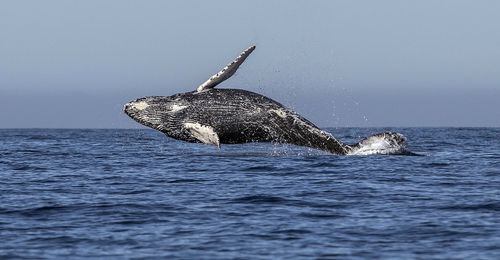Why Whales Got So Big

Why Whales Got So Big
6/24/2018
link
summary
This article delves into the evolutionary reasons behind why whales have become such gigantic creatures. It explains that one of the main factors contributing to their tremendous size is the shift from hunting small prey to consuming larger marine animals. This change in diet allowed whales to grow in size over millions of years. The article also discusses the concept of gigantothermy, which suggests that the massive size of whales helps them retain body heat in cold ocean waters. Additionally, it explores the benefits of size when it comes to diving deeper and migrating over long distances. Overall, the article provides an insightful look into the fascinating evolutionary journey that led to the impressive size of whales.
tags
whales ꞏ marine mammals ꞏ evolution ꞏ size ꞏ ocean life ꞏ animal biology ꞏ ecological niche ꞏ natural selection ꞏ gigantism ꞏ megafauna ꞏ marine ecosystems ꞏ predator-prey dynamics ꞏ food availability ꞏ climate change ꞏ species adaptation ꞏ cetaceans ꞏ marine biodiversity ꞏ marine ecology ꞏ marine food web ꞏ oceanic environments ꞏ evolutionary advantage ꞏ body size ꞏ ecological constraints ꞏ evolutionary biology ꞏ mammalian evolution ꞏ oceanic productivity ꞏ energy efficiency ꞏ evolutionary pressures ꞏ feeding strategies ꞏ animal behavior ꞏ marine conservation ꞏ aquatic habitats ꞏ ecosystem dynamics ꞏ marine science ꞏ marine research ꞏ marine environment ꞏ marine wildlife ꞏ marine species ꞏ deep sea ꞏ marine adaptations ꞏ marine evolution ꞏ marine genetics